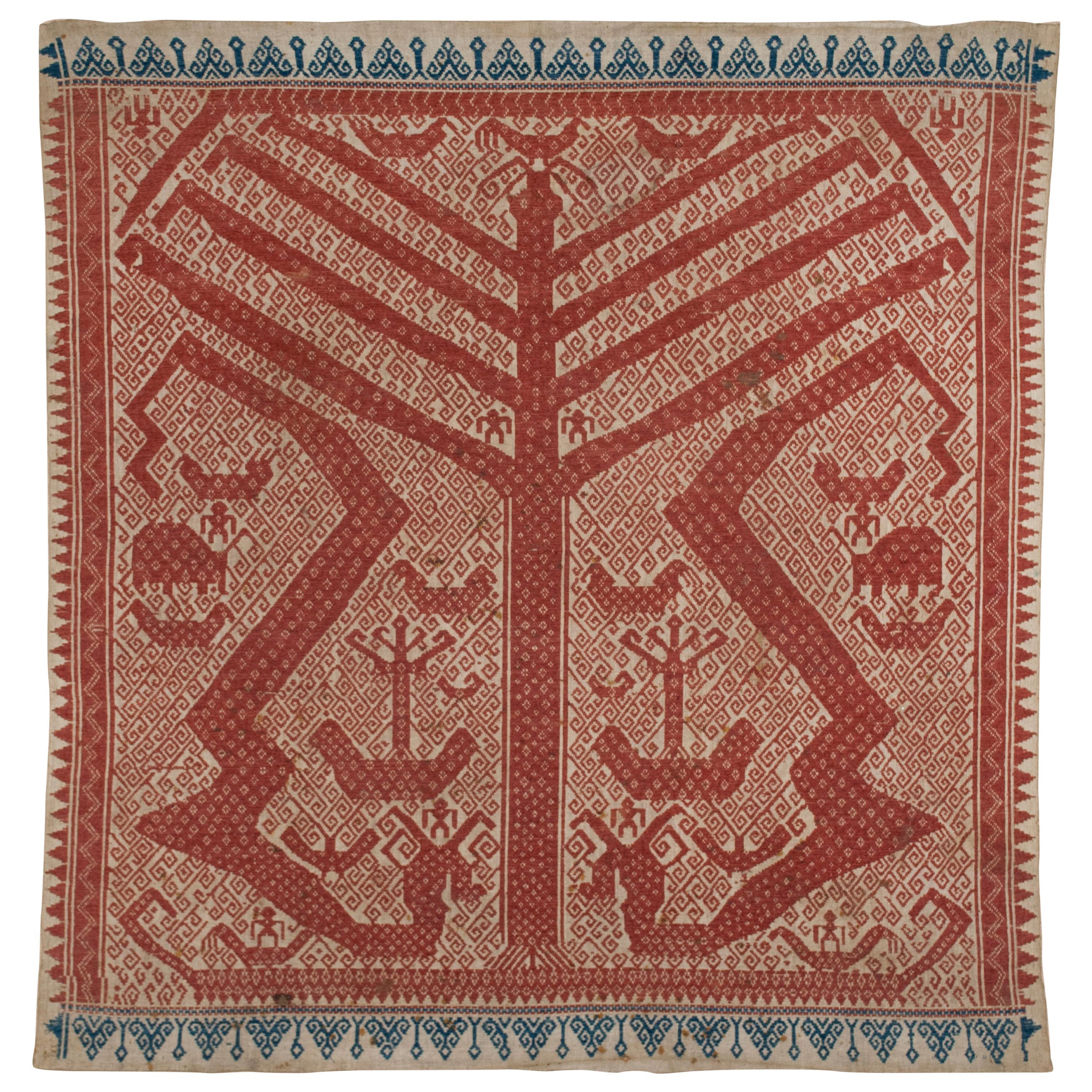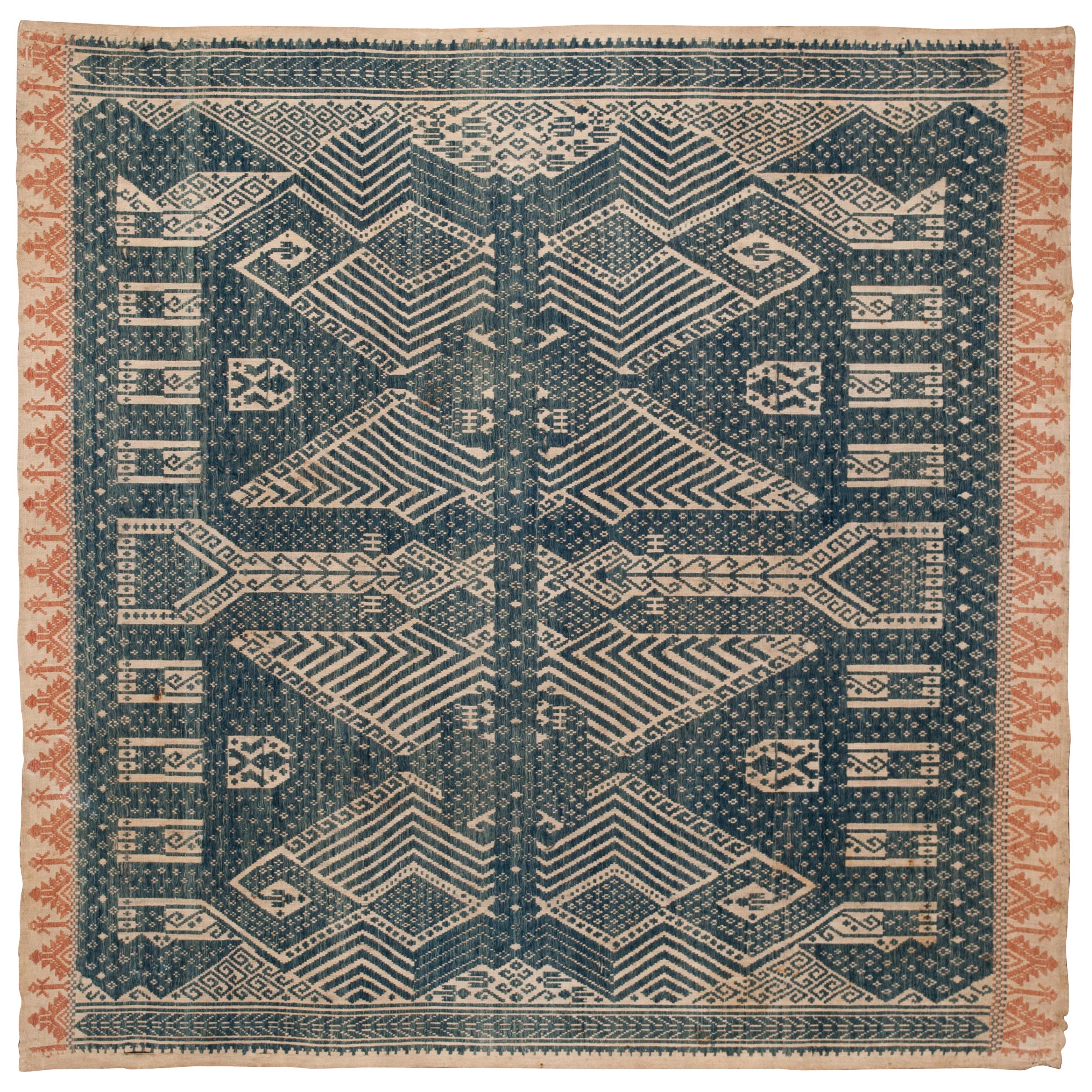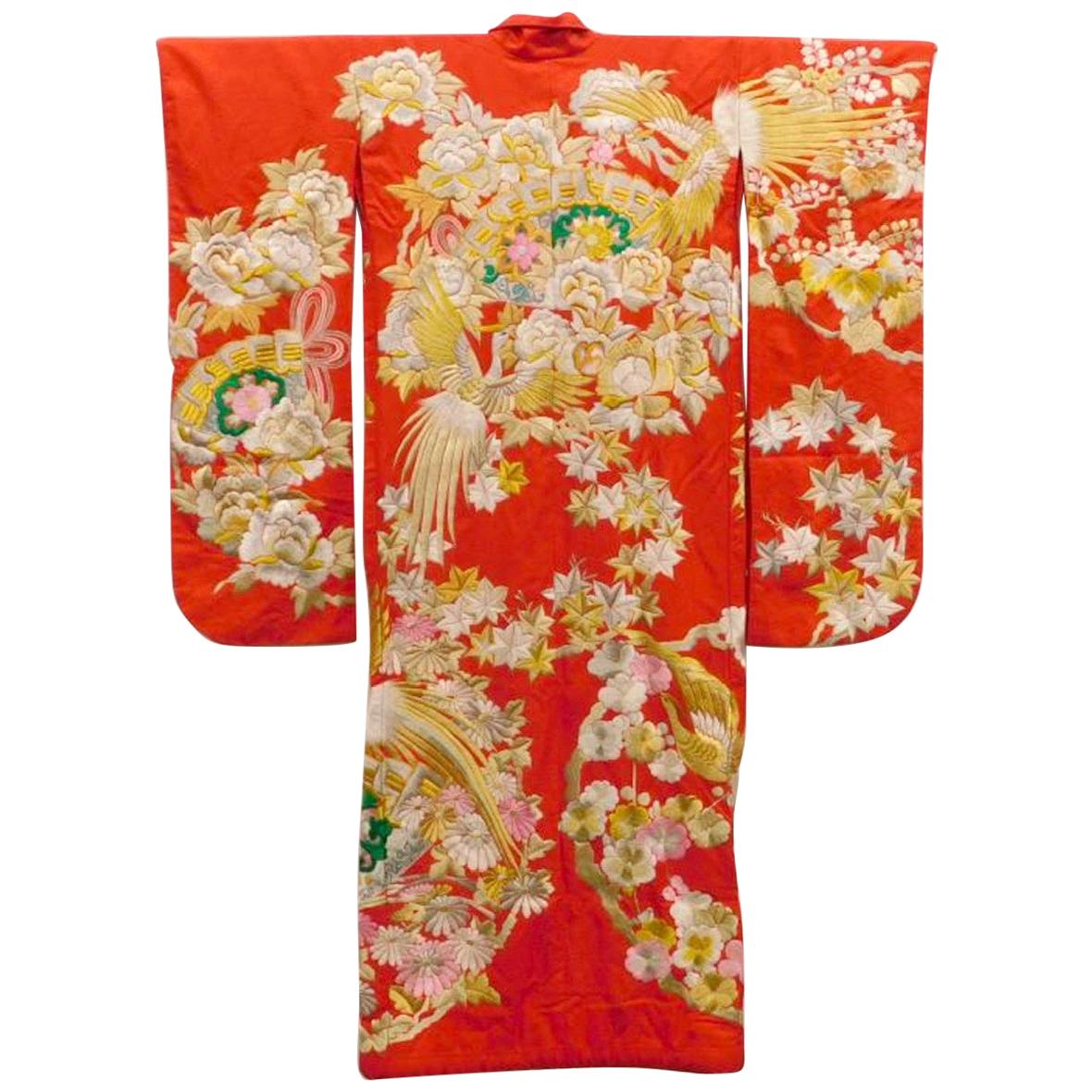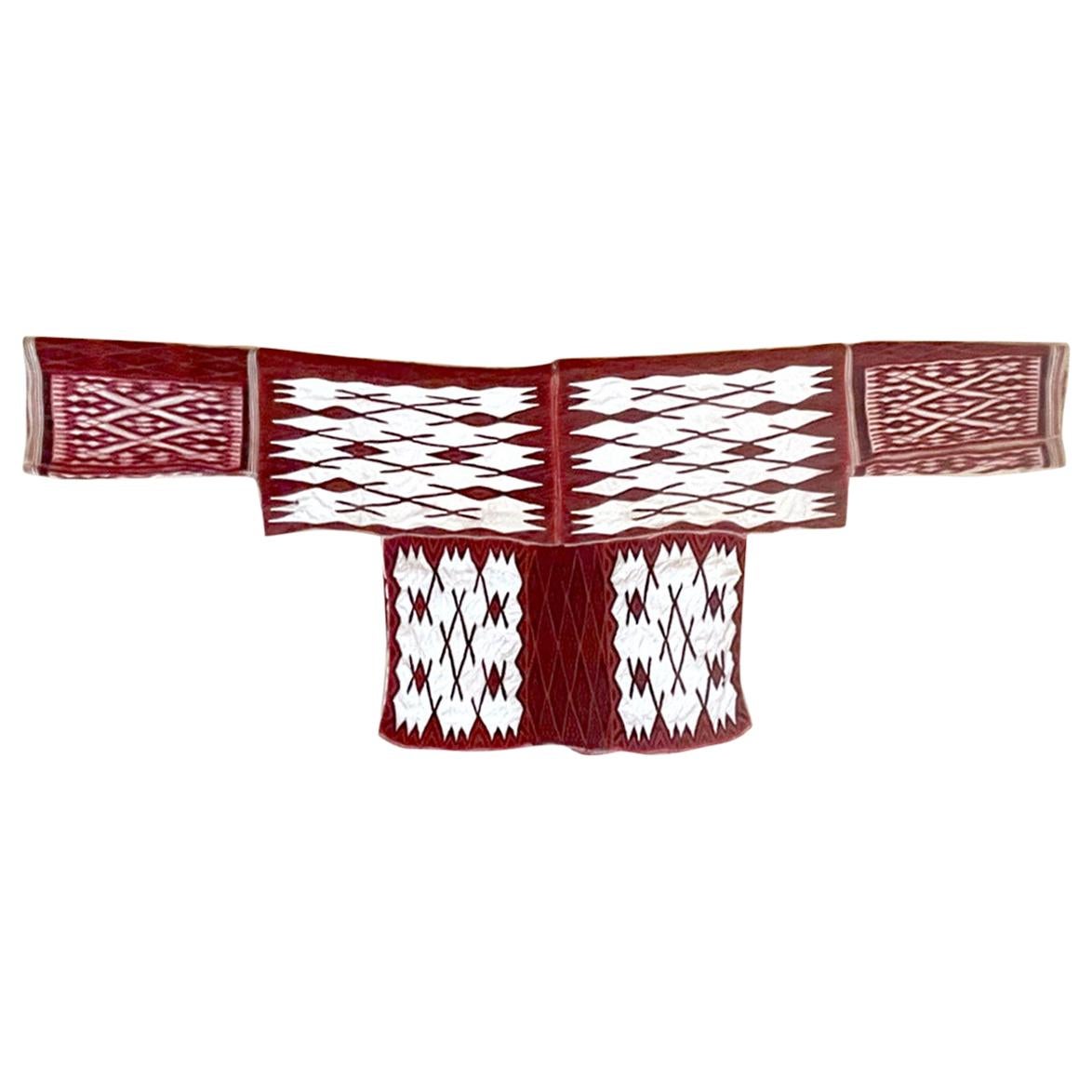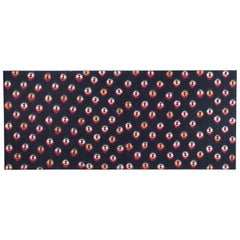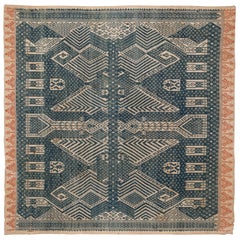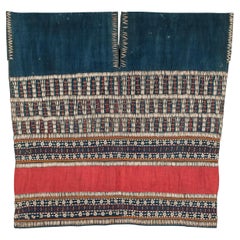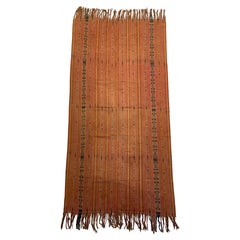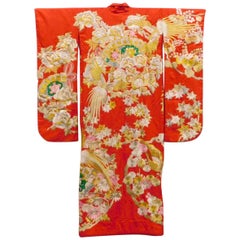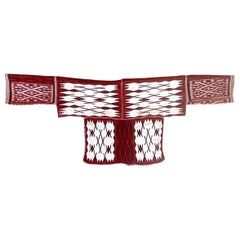Items Similar to circa 1900 Ceremonial Reed Mat, Sumatra, Indonesia
Want more images or videos?
Request additional images or videos from the seller
1 of 6
circa 1900 Ceremonial Reed Mat, Sumatra, Indonesia
About the Item
Circa 1900 ceremonial reed mat, Sumatra, Indonesia
A wonderfully preserved reed mat used on ceremonial occasions in the south of Sumatra, Indonesia, the end panels with poker work in a faux ikat pattern. Without repair or restoration.
- Dimensions:Height: 30 in (76.2 cm)Width: 35.5 in (90.17 cm)Depth: 1 in (2.54 cm)
- Style:Tribal (In the Style Of)
- Materials and Techniques:Rattan,Hand-Woven
- Place of Origin:
- Period:
- Date of Manufacture:1890-1910
- Condition:Wear consistent with age and use. Very good condition.
- Seller Location:Point Richmond, CA
- Reference Number:Seller: JR#0391stDibs: LU1778226714002
About the Seller
5.0
Platinum Seller
Premium sellers with a 4.7+ rating and 24-hour response times
Established in 1999
1stDibs seller since 2015
672 sales on 1stDibs
Typical response time: 1 hour
- ShippingRetrieving quote...Shipping from: Santa Fe, NM
- Return Policy
Authenticity Guarantee
In the unlikely event there’s an issue with an item’s authenticity, contact us within 1 year for a full refund. DetailsMoney-Back Guarantee
If your item is not as described, is damaged in transit, or does not arrive, contact us within 7 days for a full refund. Details24-Hour Cancellation
You have a 24-hour grace period in which to reconsider your purchase, with no questions asked.Vetted Professional Sellers
Our world-class sellers must adhere to strict standards for service and quality, maintaining the integrity of our listings.Price-Match Guarantee
If you find that a seller listed the same item for a lower price elsewhere, we’ll match it.Trusted Global Delivery
Our best-in-class carrier network provides specialized shipping options worldwide, including custom delivery.More From This Seller
View AllTie-Dyed Panel from Tibet, circa 1900
Located in Point Richmond, CA
Tie-dyed panel from Tibet, circa 1900.
Woven on a back-strap loom by nomadic Tibetans, this type of tie-dyed wool was traditional used for horse blankets, sitting mats, or trimmin...
Category
Antique Late 19th Century Tibetan Tribal Tapestries
Materials
Wool
Early 20th Century Ceremonial Cloth / Tampan, South Sumatra, Indonesia
Located in Point Richmond, CA
Early 20th century ceremonial cloth / Tampan, Paminggir, Lampung region, South Sumatra, Indonesia
Commonly referred to as ship cloths, these ceremonial tampan would have been used as gifts, wrappers, cushions or pillows in any number of life-transition ceremonies, including children’s first hair cutting...
Category
Early 20th Century Indonesian Tribal Tribal Art
Materials
Cotton
Early 20th Century Ceremonial Cloth / Tampan, South Sumatra, Indonesia
Located in Point Richmond, CA
Early 20th century Ceremonial Cloth / Tampan, Paminggir, Lampung region, South Sumatra, Indonesia
Commonly referred to as ship cloths, these ceremonial tampan would have been used as gifts, wrappers, cushions or pillows in any number of life-transition ceremonies, including children’s first hair cutting...
Category
Early 20th Century Indonesian Tribal Tribal Art
Materials
Cotton
Early-Mid 20th Century Karen 'Sgaw', Women’s Ceremonial Tunic, Burma / Myanmar
Located in Point Richmond, CA
Early-mid 20th century Karen (Sgaw) women’s ceremonial tunic, Burma / Myanmar
Typically used in weddings and other formal occasions, woman’s tunics from the Sgaw Karen ethnic grou...
Category
Early 20th Century Burmese Tribal Textiles
Materials
Cotton
Antique Silk Lawon Ceremonial Shawl, Palembang, Sumatra
Located in Point Richmond, CA
Antique Silk Lawon Ceremonial Shawl, Palembang, Sumatra.
A narrow rectangular silk textile dyed in 2 colors by the tritik (stitched and gathered resist) process having a crisp delineation of a magenta diamond...
Category
Early 20th Century Indonesian Tribal Textiles
Materials
Silk
Antique Rare Ceremonial Shoulder Cloth (Kain Nyulam), South Sumatra
Located in Point Richmond, CA
Antique Rare Ceremonial Shoulder Cloth (Kain Nyulam), South Sumatra
This fully embellished and intricately embroidered shoulder cloth (kain nyulam) is a rare and unique example of t...
Category
Early 20th Century Indonesian Tribal Tribal Art
Materials
Cotton, Silk, Sequins
You May Also Like
Rare Ikat Textile from Timor Stunning Tribal Motifs & Colors, Indonesia c. 1900
Located in Jimbaran, Bali
An exceptionally old and fine example of a west timor ikat textile. This particular textile is incredibly old, easily over a century old with a wonderful fading of color and aging th...
Category
Antique Early 1900s Indonesian Other Textiles
Materials
Yarn
$3,360 Sale Price
20% Off
Free Shipping
Exceptional Embroidered Japanese Ceremonial Kimono
Located in Atlanta, GA
A visually striking antique Uchikake Wedding Kimono/Robe for ceremonial occasion, circa end of Meiji to Taisho period 1910s-1930s. This bridal outer garment is of a bright red color ...
Category
20th Century Japanese Japonisme Textiles
Materials
Brocade, Silk
Ceremonial Cape Textile Art from Hmong Miao People
Located in Atlanta, GA
An oversized and impressive cape worn during ceremonial dancing by Miao people (also known as Hmong in English) from Guizhou Province, China circa 1940s-1950s in a rarely intact and well-preserved condition. Miao people are diverse minority groups living in Southern China as well as Southeast Asia with complex sub-affiliations based on attires, languages, cultural customs and art tradition. They are renowned for their textile and silver craftsmanship as well as singing and dancing traditions. This cape, rather heavy in construction and striking in bold red and black, was made from wool, hemp and cotton. The surface showcases elongated diamond patterns in complementary woven wool and couched plaque on top of the cotton part. The pattern strikes the viewer with a strong sense of dignity and power. The heavy material and pattern are strangely akin to some of the Navajo weaving. The cape is in a form a jacket with long and wide sleeves, and it was meant to be used in ceremonial occasions.
Our research reveals that the piece was from the Northwest Guizhou in an autonomous county called Weining. The area is of subtropical highland and the generally cold weather was reflected in the heavy materials used in this piece, in comparison with other textiles made in the warmer lowland.
There is an older paper label with price tag in Chinese inside the cape. It was purchased in Guizhou decades ago by a US collection in MA. With a span of over 94 inches long, it makes a very impressive textile art piece for wall hanging. Not framed and easily shipping folded up.
For a similar jacket from Weining, see "Miao Textile...
Category
Mid-20th Century Chinese Tribal Textiles
Materials
Textile
Japanese Ceremonial Brocade Jinbaori Vest Jacket
Located in Atlanta, GA
Made entirely from luxuriant woven brocade (kinran) for the exterior, this Japanese sleeveless jacket is called Jinbaori. Commonly worn by the Samurai warriors during 16th century when warfare was common in feudal Japan, this type of loose jacket, as a surcoat on top the armor, served as an extra protection, and more importantly as an identification in the battlefield with its bright colors and often Mons. In Edo period, the society was stabilized and Jinbaori gradually shifted toward a pure ceremonial function.
The jacket on offer was unusual as it was tailored entirely from the bright Chinese brocade...
Category
Antique 19th Century Japanese Meiji Textiles
Materials
Silk, Brocade
Exceptional Embroidered Vintage Japanese Ceremonial Kimono
Located in Atlanta, GA
A visually striking vintage Uchikake Wedding Kimono/Robe for ceremonial occasion, circa 1930s-1950s in the Oriental Art Deco style. The bridal garment...
Category
20th Century Japanese Japonisme Textiles
Materials
Cotton, Silk
Mounted Indonesian Dyed Silk Lawon, Diamond Pattern, Early 20th Century
Located in Austin, TX
A striking Indonesian silk kain lawon with a central diamond pattern, Sumatra, Indonesia, late 19th or early 20th century.
The ceremonial shawl, call...
Category
Antique Early 1900s Indonesian Tribal Tapestries
Materials
Silk
Recently Viewed
View AllMore Ways To Browse
Reed Furniture Antique
Indonesian Antique Furniture
Hand Woven Mat
Tribal Indonesia
Ikat Antique Textile
Furniture Indonesian Rattan
Rattan Indonesia
Indonesian Panel
Panels Indonesia
Reed Mats
Poker Art
Ikat Indonesia
Indonesian Ikat
Ikat Panel
Indonesian Ikat Textiles
Antique Indonesian Textiles
Poker Work
Antique Indonesian Ikat

